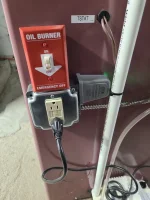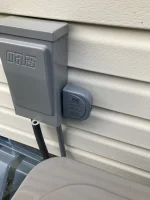Paul_Siu
Thread starter
The 2-3 years come from a Wirecutter article. I am no expert, so I can't verify their claim. Their explanation is that surge protectors are subject to surges through out their lifetime, so that the MOV eventually wears out. Supposedly, a 6,000 Joule surge protector will take 6,000 Joule before dying, so it can take 60 100 Joules hit before it expired. The article indicates that afterwards it's just a powerstrip. I don't know if all of this is true or not. It sort of makes sense, since if the 6,000 site around long enough, it may get hit and end up with with only 1000 joules left. However, I was also under the impression when the MOV fails, the surge protector will stop working. I did recall that series mode surge protectors like Zero Surge that does not have a MOV lifespan often note that in their product literature, but since they are trying to sell you a way more expensive surge protector, they are probably bias. It's probable that 2-3 years is aggressive.
The protection light does not give indication of how much protection is left.
Actually, I have the same exact ISObar as odie, which I believe I purchased back in the mid-90's. It still works. but I was worry that the surge protection part may not be working after 20 years. I have replaced it with a newer strip for my home theater. The newer strip is made of plastic where the old ISOBAR is closer to a tank.
Paul
The protection light does not give indication of how much protection is left.
Actually, I have the same exact ISObar as odie, which I believe I purchased back in the mid-90's. It still works. but I was worry that the surge protection part may not be working after 20 years. I have replaced it with a newer strip for my home theater. The newer strip is made of plastic where the old ISOBAR is closer to a tank.
Paul


